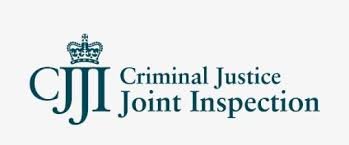By U.S. Department of Justice
States, localities, courts, and prosecutor offices are among the entities that levy legal system fines and fees. The categories of fines and fees, affiliated costs, and discretion to impose or waive them, can vary greatly between, and even within, jurisdictions. However, there are certain common features. “Fines,” as utilized in this report, refers to financial penalties that are imposed upon criminal conviction, including misdemeanor and felony convictions, or upon juvenile delinquency adjudication, or when a judgment is entered for a civil infraction. A civil infraction includes citations that often can be paid in lieu of going to court, such as some quality-of-life offenses, traffic tickets, and municipal property code violations, among others. Fines are often imposed as a form of punishment or deterrence.3F 4 “Fees,” as utilized in this report, refers to itemized, financial assessments that are imposed on litigants to fund court or other government functions. They can arise at any stage of legal system involvement. For example, pre-trial litigants may face clerk fees, fees for requesting a public defender, filing fees, fees for using a public defender, or fees for entering a diversion program. Litigants who exercise their right to a trial may be assessed jury fees or fees for using an expert witness. In addition, individuals who are incarcerated may face in-custody fees for room and board, phone and email services, medical co-payments, library access, and basic hygiene necessities. Upon release, or as a condition of pre-trial release or diversion, individuals may face fees for probation supervision, drug testing, entrance into a DNA database, electronic monitoring, or drug and alcohol classes. Further, if a defendant is a minor, many jurisdictions will impose these fees on the child’s parent(s) or legal guardian(s). Unlike fines, fees are often imposed as mechanisms for funding criminal justice systems and other government functions.4F 5 Additional financial obligations may result from the assessment and enforcement of fines and fees themselves: processing fees; penalties for late payments; interest; fees for paying through a payment plan; fees for paying online; driver’s license reinstatement fees; and third-party debt collection fees, among others. Some courts also impose fees to fund specific programs, like facilities upkeep. This report treats these additional charges as “fees,” although they are often referred to as “surcharges.”
In this report, “assessment” refers to the amount of the fines or fees levied against an individual litigant, or the process to make such determination. “Enforcement” refers to the processes that jurisdictions use to compel litigants to pay fines and fees that have been assessed against them. Enforcement mechanisms may range from written warnings to financial penalties, wage garnishment, license and permit suspensions, and even arrest and incarceration.5F 6 Notably, this report focuses on fines and fees assessed against litigants accused by a government entity of criminal offenses, delinquent acts, or civil infractions. There are several categories of legal financial obligations (“LFOs”) that are outside the scope of this report, including restitution, bail bonds, and fees in civil cases that are not initiated by a government entity.
Washington, DC: U.S. Department of Justice, 2023. 73p.





















